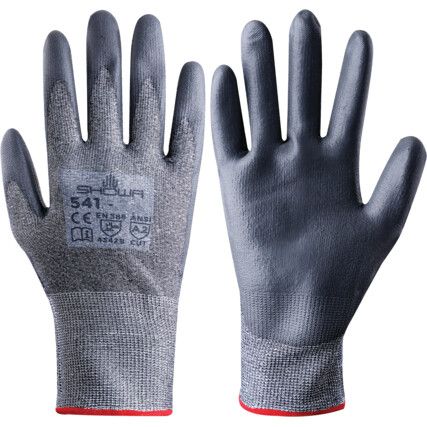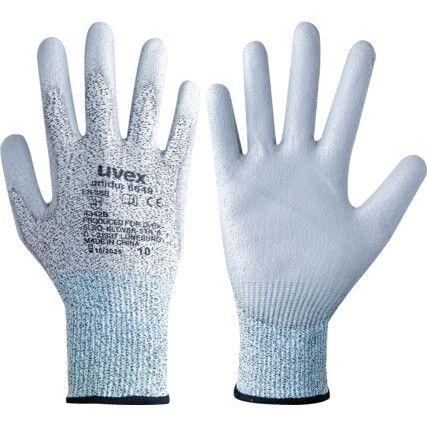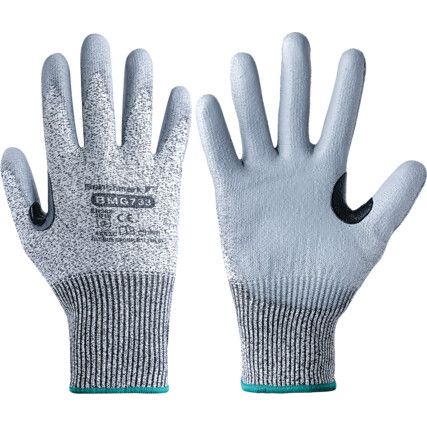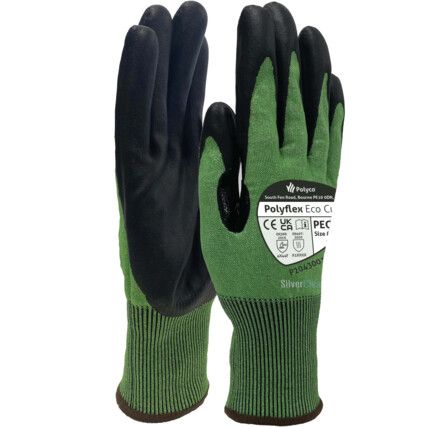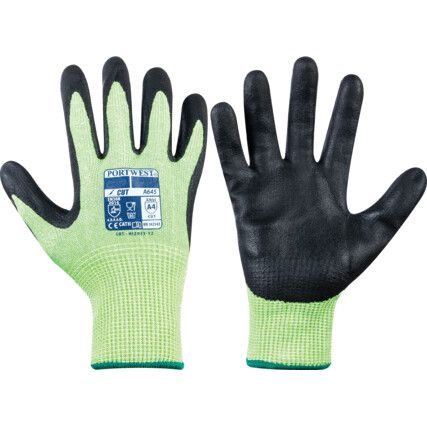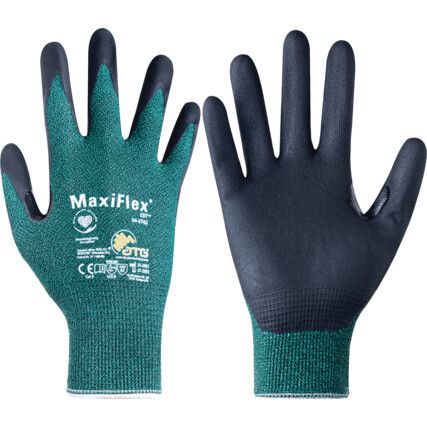Cut Resistant Gloves
Our hands are a precious commodity in the workplace, but are susceptible to injuries from cuts, grazes and other industrial hazards. At Cromwell, we understand the importance of quality PPE to protect people from accidents and injury; and have carefully chosen range of cut resistance gloves to enhance safety in high-risk environments. We stock cut gloves from reputable suppliers like Tilsatec®, Skytec® and Ansell®.
What are cut resistant gloves?
An essential piece of PPE equipment cut resistant gloves are designed to reduce the risk of severe injuries when handling sharp products or using sharp tools. Rigorously tested to ensure compliance, cut gloves are governed by EN 388, which uses a range of testing methods to determine cut protection ratings.
Cut resistant glove types
Cut resistant gloves are used widely in a range of professions and are made using various materials and cut resistant technologies. However, to ensure gloves protect against the specific hazards faced by your workforce, protection ratings for each glove must be taken into consideration. All cut gloves should feature a CE mark and comply with EN 388 standards.
• Abrasion - Rated between 1-4, with 4 being the highest level of protection, abrasions include scrapes, grazes and minor cuts.
• Blade cuts - Coupe test Rated between 1-5, this highlights a glove's protection when handling sharp objects, such as glass and sheet metal. (The introduction of the TDM test will see this test phased out in the next few years).
• Tear strength - Gloves resistant to tearing score the highest rating of 4 and are used widely in heavy-duty handling applications.
• Punctures - This rating highlights a glove's ability to protect against the penetration of sharps and stabbing injuries to the wearer
• Cut resistance TDM test - This is an optional test carried out in compliance with EN ISO 13997 and rated between A-F. The glove must achieve the minimum level of A for each test to pass.
• Impact - This is an optional test carried out in compliance with EN 13594 and labelled with a P if passed
Considerations when choosing cut resistant gloves
• Hazards - the type and frequency of hazards to which the wearer is exposed will determine the best glove for the application.
• Fit - gloves should fit comfortably without pressure when bending the fingers or gripping a tool. They should also stay securely in place without frequent adjustment.
• Environment - the liner can offer warmth or be lightweight and moisture-wicking and should be chosen according to the workplace setting.
Cut resistant glove jargon buster
To keep you informed on safety legislation, we've broken down and explained the key safety standard for cut resistant gloves.
What does the hand protection standard EN 388:2016 + A1:2018 mean?
EN 388:2016 governs requirements to ensure each product meets impact and penetration compliance to keep users safe.
Let's break it down...
• EN - This is a current European standard
• 388 - This is the assigned legislation number
• 2016 - This is the year the safety standard was updated from the 2003 version. This update included amended test conditions
• +A1 - Amendment 1
• 2018 - This is the year the amendment was applied to the standard
FAQs
How does EN 388:2003 translate to EN 388:2016?
In 2016 EN 388 standard was amended to ensure cut resistance levels were rated more reliably. According to the 2003 coupe test, a 5 Newton loaded circular blade was passed backwards and forwards over the same glove sample until it cut through the material. The number of passes taken to achieve this would assign the end cut rating.
However, there were concerns that the blade used for the coupe test would blunt over the course of the test, thus rendering the results inaccurate.
The 2016 amendment dictated that if blunting was present during the coupe test, then the glove could be subject to ISO 13997:1999 testing methods (TDM test).
This test requires a straight edge blade to be drawn over the glove sample in a single direction with variable forces applied from below during the test. The force required to cut through the glove over 20mm of blade movement is then recorded and a cut protection level of A-F is assigned.
Do cut resistant gloves actually work?
While they can't completely protect against all injuries, cut resistant gloves significantly reduce the risks of cuts and lacerations to the hands. This is especially true of the vulnerable areas between the fingers and thumb where glove protection is often enhanced with added protective layers or coatings.
For more information on safety gloves see our Hand Protection Guide... https://www.cromwell.co.uk/info/safety-technical-hand-protection
